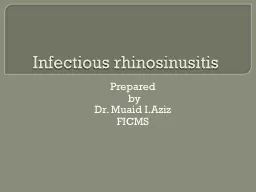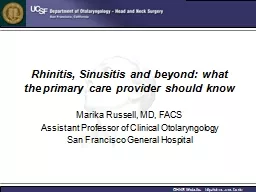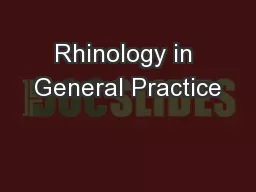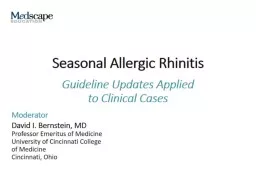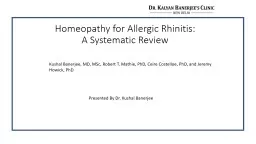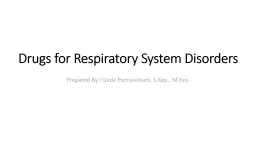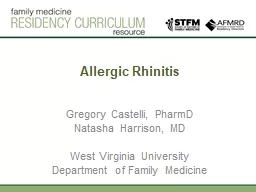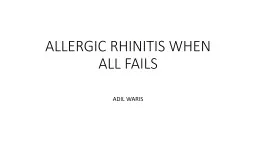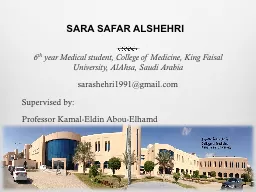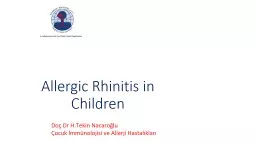PPT-Allergic Rhinitis DR. ABHISHEK BHARDWAJ
Author : ceila | Published Date : 2022-06-15
Rhinitis is defined clinically as having two or more symptoms of anterior or posterior rhinorrhoea sneezing nasal blockage andor itching of the nose
Presentation Embed Code
Download Presentation
Download Presentation The PPT/PDF document "Allergic Rhinitis DR. ABHISHEK BHARDWAJ" is the property of its rightful owner. Permission is granted to download and print the materials on this website for personal, non-commercial use only, and to display it on your personal computer provided you do not modify the materials and that you retain all copyright notices contained in the materials. By downloading content from our website, you accept the terms of this agreement.
Allergic Rhinitis DR. ABHISHEK BHARDWAJ: Transcript
Download Rules Of Document
"Allergic Rhinitis DR. ABHISHEK BHARDWAJ"The content belongs to its owner. You may download and print it for personal use, without modification, and keep all copyright notices. By downloading, you agree to these terms.
Related Documents



